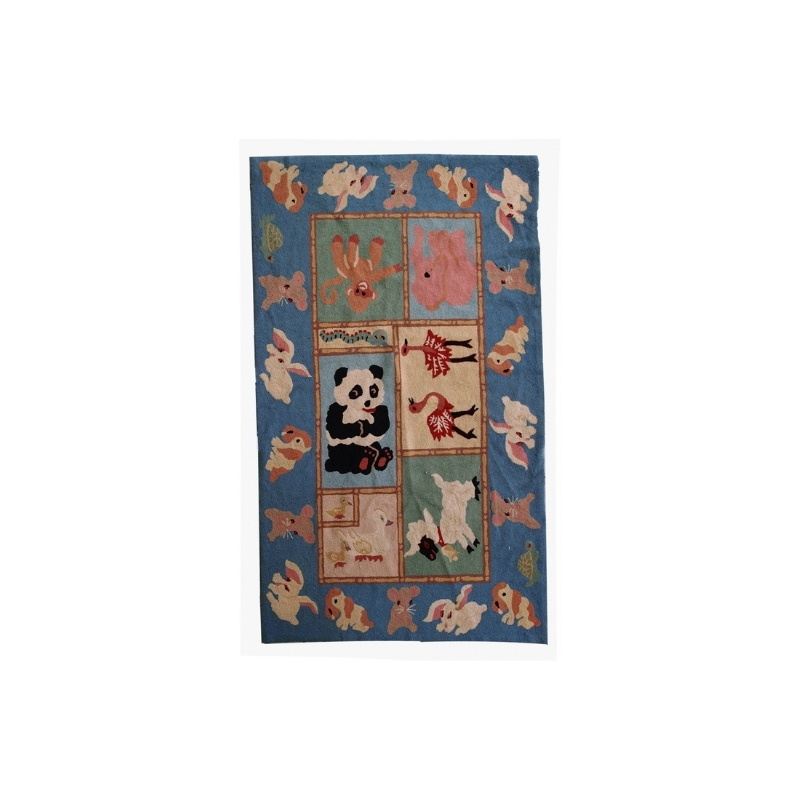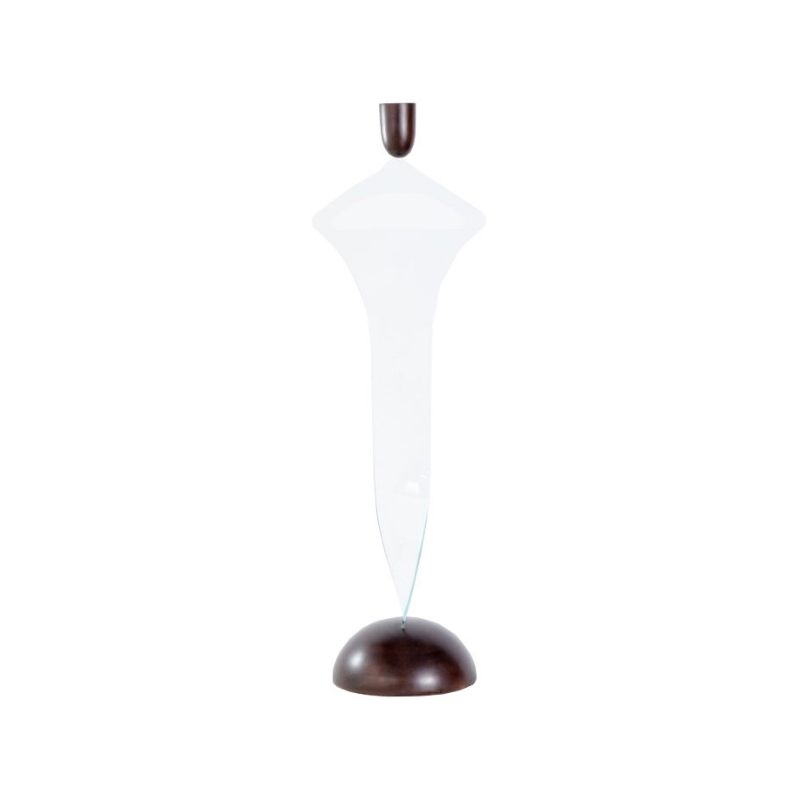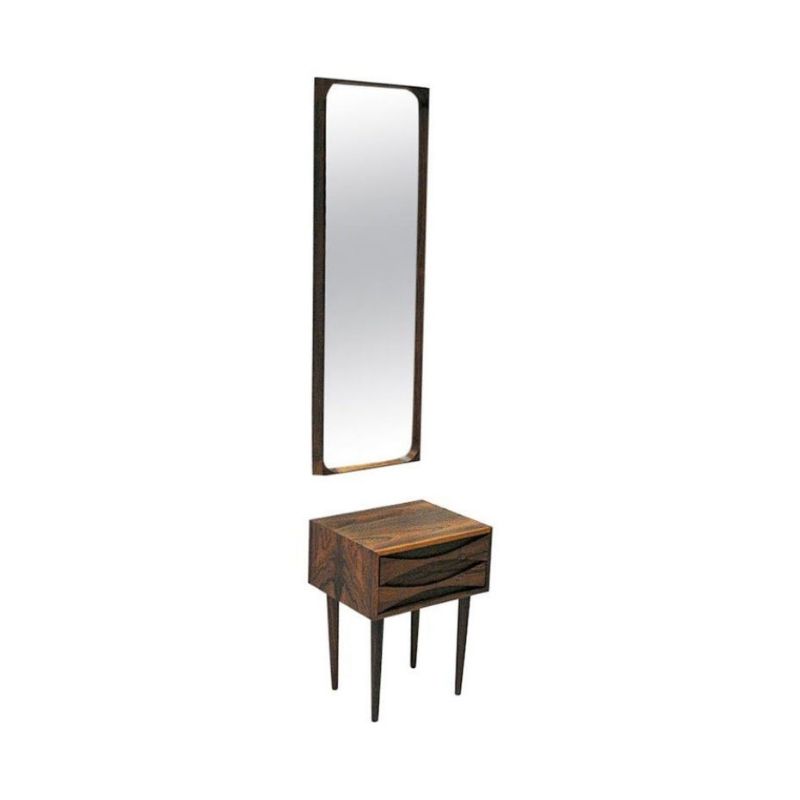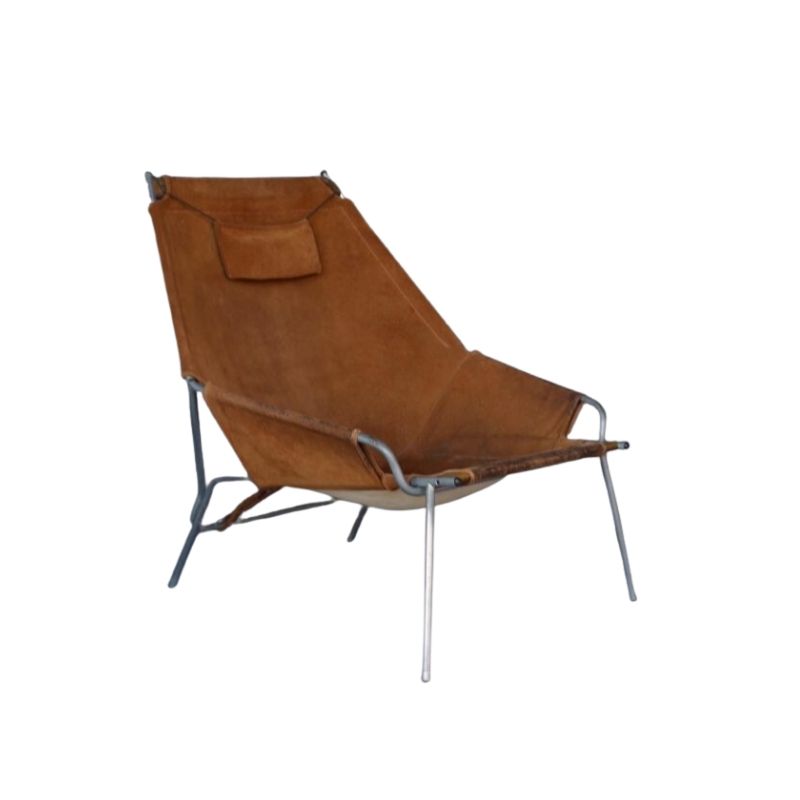A good friend and former collegue sends me good wishes for the season with a compact fluorescent in the shape of a peace sign (the Mercedes star). Other than his warm wishes he reminds us of the fact that replacing three incandescents by three fluorescent bulbs in every U.S.home would be equal to removing 3,5 million cars off the road. I am not suspicious because he is a talented lighting designer, but I can not get the figures to work. A saving of 45 watt per bulb would require about 7 hours of use per day in order to safe a K watt. I suspect that there are about 150 million homes in the U.S. meaning about the same amount of K watts. Which in my books means that the average U.S. car is expected to run 50 K watts a day...I suspect it is a whole lot more...
compact flourescents
This raises a issue that bugs me about the CF bulbs. They still mostly try to mimic the overall shape of a traditional incandescent bulb. I assume partly for marketing and partly to fit in existing fixtues, but I want to see some CF bulbs that revel in the malleability of their potential forms. Some that are shaped to be a finished light fixture without the need for a lot of extra bits of metal, glass or wood. Screw in a new bulb in a good old durable ceramic screw mount standard base and you have a fabulous new light fixture. If you can make a peace sign imagine the possibilites. I want one like this:
You can clip on a simple disc of paper/glass/plastic/resin/etc to change the effect. But the bulb itself has essentially become it's own fixture.
Just a smartass quibble, but...
I think the Mercedes star has three arms; the "peace" symbol has four. Let the sun shine in.
http://www.lib.berkeley.edu/~lcushing/addpages/PeaceSymbolArticle.html
well
james, since compact fluorescent bulbs won't be existing much longer; they will be replaced by leds. philips did some research in their 'next simplicity' program and designed some lamps like you want; in different forms. although these are lamps with build in leds, to me they seem like cf freeformlamps; check out the weblink.
http://www.inhabitat.com/entry_714.php#body
Some things about compact fluorescent bulbs.
Dear Koen, I don't know exactly where does your question goes, I didn't understand the mathematics you made very well, but I think it doesn't matter.
It's allways very difficult to say something to you without making many mistakes, but I'll try.
Suspicious? Once I heard: Statistics are used to explain whatever you want.
Maybe they use this statistics to save the planet, and if not, at list make a profit selling bulbs.
Other mathematical play could be 3 bulbs x 150 million homes x $5 each : mmmmmmmmmm.
Hey, I am not against profit. But I feel a bit disturbed when a ?NEW TREND--, are changing again and again.
But I feel a bit disturbed when a ?new TREND- emerge:
All those that no join it or are old fashioned or have a feeling of ?loosing the train-. Or don't see the BIG benefits of join it.
I am not against compact fluorescent bulbs also.
Sometimes I say YES, sometimes say NO.
Let's see pros and cons.
PROS:
-Saves energy
-Lasts 8 times more than incandescent bulbs, that gives two pros:
-Could save money since you dont need to replace it.
-You replace the bulb every 6 years vs 6 months. (this is a benefit important to me, and no mention in ads, since sometimes, it could be a big inconvenience to change the bulbs).
CONS
-More expensive than incandescent ones.
-Are ugly. (If not turns awful a nice tiny fixture)
-and so could turns awful a nice tiny fixture.
-Has very ?cold white- light. (Yes, you can use ?warm white- light , but they are not the same
'color', some are more warm than others, even if you buy them at the same time.
-dosen't support dimmer, nor timer nor solar panels system.
When you offer a compact fluorescent bulbs to someone, 3 of 4 will say ?awfull!!!!-, and ugly kind of light. Then you can explain whatever you want. But when the word - FLUORESCENT- goes inside their heads, it's impossible to convince them of any benefit.
SO:
I would use/recommend to use when:
- For lamps that are turned on many hours a day. If you want to save the planet and/or save money from the bill and from bulbs. (You won't save nothing if you use a bulb one hour once a week, and will spend money in bulbs).
- Use it in lamps that you don't see the bulb (As compact fluorescent bulbs are not nice, use it in lamps that you won?t realize which kind of bulb are you using).
- It can be used more beautiful compact fluorescent bulbs. More expensive. It depends on the case.
(must be the kind of the ones that gave you your friend, or
- And I do recommend to used ALWAYS, and are the best option, when the fixture/lamps it,s a very big, a very heavy glass lamp, and very difficult to change the bulbs. (As they lasts 7 years you won't need to deal with a big n heavy fixture every 4-6 months).
your cons
are not quite right; some compact fluos are dimmable; eg. TC-DEL (G24q-2/3fitting), TC-SEL (2G7); ok these have special fittings (not the conventional E27) but there are also e27 cf's that are dimmable; osram dulux el dim. as for the shape; also their some improvements have been made; check out the osram dulux el classic (that has the same shape as normal 'globe'lamp or pearshaped lamp) (same goes for the philips range). greater problem is with the tl (linear fluos) because mostly the 'bad ones' (range 830) are used people do not like them but use one in the 927 range (this means 90% of color renderindex; very good) en 2700°kelvin; warmwhite color this lamp can easily used in normal homes (830; 80%cri; 3000°K; neutralcoldwhite). one remark with these lamps; you need some electronic gear and these are not suitable for frequent on/off; this will consumes a lot of energy. the only reason why i still design lighting luminaires with halogen lamps is because of their tinyness vs high lightoutput.
About compact fluorescent bulbs. p1
Dear Gerrit.be:
Good!, I see you know a lot about bulbs. I should wait to see your profile......but, What do you do? You are a disigner, once I read. Are you designing lighting luminaires? I am designing many also. So I'll know it for future feedback!
You are right, another CON, I forgot it's the size: They are always very big.
I didn't know the dimmerable bulbs. Thanks, I learned something new.
About ''the same shape as normal 'globe'lamp or pearshaped lamp'' I know them and are a very good option, I also like the 'big globe shape', almost perfect, not so cheap nor so expensive.
I was thinking on them when I said: ''It can be used more beautiful compact fluorescent bulbs. More expensive. It depends on the case''.
About the color light, I also know that, I should learn more, but as I said, it also has new problems (if you buy 10 bulbs they have not the same 'color', some are more warm than others, even if you buy them at the same time). I manufacture lamps with 10 bulbs, and when you turned them one ore two has different color.
But the core of I want to say, didn't change it I think.
To me the compact fluorescent bulb,
it's this:
.............. (picture).......a compact fluorescent bulb,
When the companies see the cons and try to do improvements, I don't see progress in many cases (I mean in general)
(Sometimes when they want to solve one CON, adds one or two new CONS).
CON; ugly color, then correction, another new con.
CON, don,t support dimmer, not E27, ok they have now an E27, no problem yet?
CON, etc etc
And even if they work I think that we are making this complex again. And
There are dimmerable bulbs, but we are making things complex again,
You want to dimmer?, Use other kind of bulb, and save the planet in other lamp.
It's better to simplify
That's why I am suspicious.
Maybe fluorescent bulbs, as other technologies, it's developing yet. But maybe as trains and even PCs are at the end of the develop.
About compact fluorescent bulbs.
CULTURAL THING:
May be one answer to me it,s that,s a cultural thing, and we need time to accept
compact flourescent bulb as they are.
I read that Alejandro Virasoro, a good architect wrote in 1910 or so, something like that:
Why people doesn,t accept ,new technologies, AS THEY ARE. He was talking about the new incandescent bulb,
He was angry because people(specially rich people) needed to put a basement under the bulb, to look it like a candle. And he couldn,t understand why they couldn,t accept electric bulbs as they are, but need them to have the last new car.
So may be we have to wait, left fluorescent technology do it by itself, and accept it as it is.
I am not a big fun of ,NEW, nor ,NEW TECHNOLOGIES,, I used to be when I was younger,
But I learned, that?s better to wait.
Because when they do one improvement, could do more mistakes (when want to solve one CON, adds one or two new CONS)
And about new technologies, I repeat I am not a big fun, I like your approach to the emerging led technology, but I don't think that would fluorescent disappear.
Every new technology lefts more or less space to the precedent.
Think that we still have incandescent bulbs, and even candles are the best option in many cases, (soft lighting, romantic lighting), and for when all the other technologies doesn't work, we still have candles. They work without electricity!!!.
Ps: You said you design lighting luminaries with halogen. I design and manufacture lighting luminaries ALWAYS for E27 (Iam start trying G9 as they are tiny, but I don't know wich new problems I'll have)
You see that's true that I don't like technologies. I should stop, or I'll begin to design lamps only for candles.
hi gustavo
yes i am a designer and somehow specialised in luminaires.
what you say about the cf not having the same color is also true because they need some 'burning in' time; like 100hours and then they are 'degenerating' and slowly fading out. so if you buy new ones at the same time not much a problem, if you replace just one you'll see a difference.
you want to design a luminaire with the g9(= fitting : QT14 = lamp) halopin (osram; inventors / philips: clickline); the main problem you will have is heat! this is a nice lamp; small and works on main voltage but be sure that your fitting is one of a good quality (ceramic) for example from bender+wirth/vossloh-schwabe/emc colosio..., be carefull with the wiring; do not use pvc isolated cables but rather ptfe, fep or pfa. also the junction clamps should be out of ceramic or steatite and not plastic. as for covering do not use plastic (pc or pmma (what normally already is forbidden in luminaires) but hardened or borofloat glass. also be aware that the 40 and 60W do not have the same size. good luck; as for me i am also reluctant towards new technology; more afraid because mostly it is not sure which quality/problems these products will have in the future. but on the other hand thanks to those damn typewriters where the little hammers would crush in each other we all now have computerkeyboards where these letters are placed in a crazy way. (leraned to type on a azerty then go typing on a querty!)
I have a question about CFs...
Whenever I go to grocery store or the big box discount stores where I buy things like lightbulbs for my lamps, I purchase a compact flourescent bulb, bring it home and it never puts out much light, certainly not light that is pleasant to read or work in.
On the other hand, if I go out into my kitchen, where we have several, old fashioned long-tube flourescents, the light is bright and pleasant to do any task in.
Why do these compact flourescents I buy put out such an inferior quality of light compared with the old fashioned long tube flourescents in my kitchen?
By the way, I have a 40-50 year old office desk flourescent lamp (articulated arm, kind of art deco looking) that takes flourescent tubes about 18 inches long and it puts out great light to work in also.
I get the feeling that to make these new CFs energy efficient the engineers just cut way back on the electricity they draw and so they can't excite the gas in the CF tube nearly as much. Or is there some other reason for the difference in the brightness of the light?
One more light bulb question...
Regarding this statistic that if one simply shifted from incandescent bulbs to CFs one could save alot of electricity...has anyone considered how much electricity would be saved if everyone simply switched from 100watt incandescents to 60 or 40 watt incandescents? The switch from 100watt to 60 or 40 watt incandescents produces a comparable decline in brigtness of lighting that I find when I switch from a 100watt incandescent to the typical CF I am offered in the stores around where I live.
Again, though I am not an engineer, I get the sense that the switch to CFs is largely a switch to a less powerful light bulb, rather than a switch to a bulb that is drastically more efficient at putting out the same amount of light.
Can someone clarify this issue for me?
Some of the differences
between the compact and the regular fluorescents is that the first one is a consumer product (often mass produced in China) and the second is considered a more professional light source because the large users are offices, schools,factories, hospitals etc. were the buyer is often more knowledgeable. How many consumers would look at the CRI (Color Rendition Index) or light temperature that Gerrit is mentioning...as well as real electricity consumption. By changing sockets more and more north american fixtures are now made suitable for T8 or T5 instead of T12 (the T refers to 1/8 of an inch T12 is 12 x 1/8 = 1,5" T8 is 1" etc. Standard fluorescents (muliples of 1 foot) are now available as thin as T2 with excellent light quality. But that is not the point I wanted to adress...When Poul Henningsen was designing his famous lamps for Louis Poulsen one of his major concerns was how to change the colour of the incandescent lightbulb, that he considered too bright and too white. hense the red interiors of some of his lamps as well as the choice of brass for the fixtures itself. Although high output and efficiency (keeping the light output as close as possible to the initial Lumens) is important lighting fixture designers still have the capacity to condition the light with the design colour and material choice.
.
Dear Gerrit, Thanks for your kind words and your info. With G9, as you told me I,ll have to take care with more things than I imagined. Thanks again. When I,ll have a question, l,ll know who could know. The other day, I found a tiny bulb for E14, those used for refrigerators, but as it?s not so easy to fund, I guess I should go with G9, Thanks again.
Dear Geo: Why do you say blind alley?. To me CF are other option to incandescent, with their pros and cons. And as a user I should wait to LED.
Dear Dcwilson: (I am not a lighting engineer neither, I just manufacture / sell lamps, but I was asked by the customers to sell the bulbs that better fits on each lamp. )
You are right, A good easy and simple way to save energy, it,s to switch 100w to 60-40w. In the same line of thinking, It also made me think, that to save electricity, it's good to turn off the light when I am not in the bedroom.
But you said: 'The switch from 100watt to 60 or 40 watt incandescent produces a comparable decline in brightness of lighting that I find when I switch from a 100watt incandescent to the typical CF I am offered in the stores around where I live.' That's what you think you see,
But the compact fluorescent saves more than to switch 100w to 60-40w. If you have it in a room 2 hours it's perfect what you said. But if you need it 24hs a day 365 days a year, not. Remember that a CF of 20w gives a ,comparable, light to a incandescent of 100w.
(20w CF = 100W inc.) (so a '20w CF' needs 20w of electricity to give the same light than an incandescent of 100w).
I don't understand very well the difference between the CF new ones you bought and the ones from the kitchen. Are exactly the same? If are the same I could say that the ?cold- light, fits better for ?cold- working places such as kitchens, as well as hospitals, etc. But I think that provably ARE NOT EXACTLY the same. If this is the case:
1 May be you get a Chinese bad quality CF and not a First brand (philips/osram) (I like 2 nd brands, but in this case a bad quality it is VERY VERY BAD)
2 The colour of the light, that gerrit said it VERY important, in general CF are COLD white light.
Incandescent are WARM white light. You could buy CF WARM white light very similar to incandescent light colour. . You see the difference?
Maybe you have a Bad quality COLD one.
3 I don,t know.
Dear Koen: Since you did not intend to change the 'peace' symbol, why are you/ are not suspicious. What is you.... can not get the figures to work?. I am still asking myself, Where does your question goes?
If you need any help, please contact us at – info@designaddict.com









